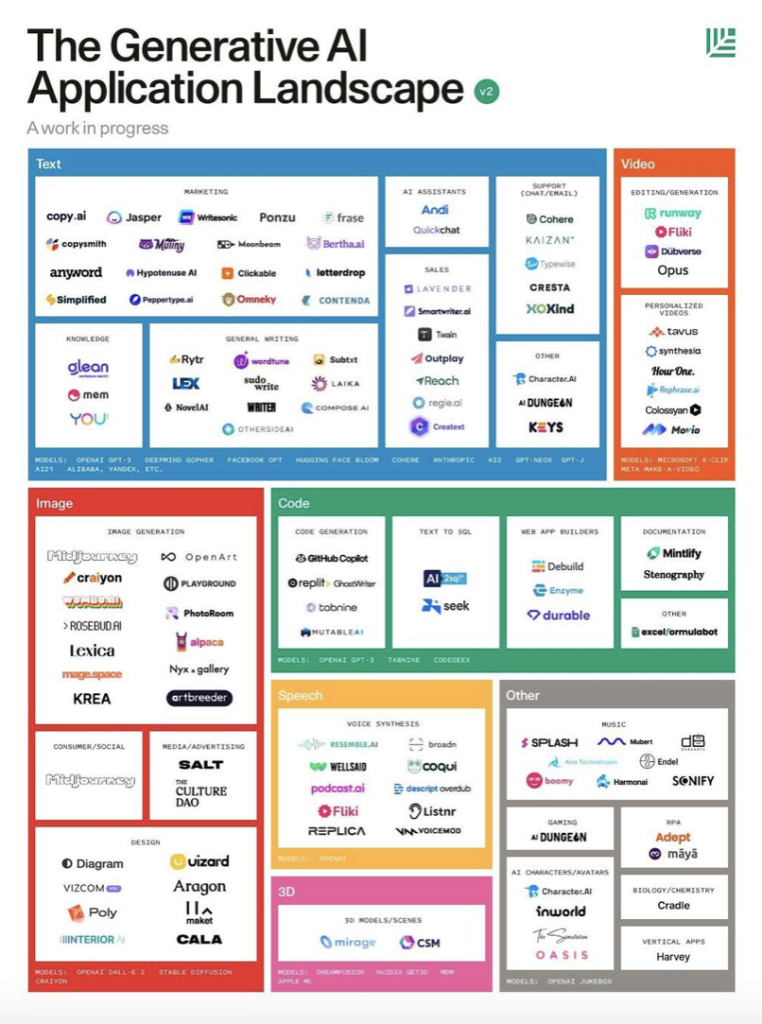Why CMOs Need a New Mindset for Generative AI

How might CMOs become better prepared for generative AI? As a general rule, C-level executives are not ready. A survey conducted by KPMG US on 225 US executives in March 2023 found that 65 percent of them believe generative AI will have a significant impact on their organizations in the next three to five years, surpassing other emerging technologies. However, despite these positive results, the survey also revealed that 60 percent of respondents are still a year or two away from implementing their first generative AI solution, indicating that executives may not be fully prepared for immediate adoption. CMOs, like their C-level peers, need a new mind set.
CMOs often treat emerging technology as a special project for someone on their team to sort out. This happened most recently when the metaverse became a trending topic. Frankly, CMOs seldom have the time to dabble with new technology on the job, but generative AI changes things. CMOs need to pay very close attention to how generative AI can change how they do their work. Because it will change the CMO’s job and the entire marketing function (and I recently shared an example of how one aspect of marketing can be done differently with generative AI). To understand how to benefit from generative AI, CMOs need to change their mindset from “I don’t have time for this” to “I need to get involved in using generative AI personally.” This requires CMOs to go on a journey to AI enlightenment. The journey looks something like this:
The Stages of Generative AI Enlightenment
- Stage one: curiosity. CMOs hear about generative AI, and they have one question on their minds: how can generative AI make marketing more efficient? How should their teams be using generative AI to create content, do research, and a host of other activities?
- Stage two: uncertainty. The more they learn, the more uncertain things become – not just because generative AI is a seemingly untamed beast, but because the most popular tools such as ChatGPT and Stable Diffusion are fraught with risk such as bias and copyright infringement. But even still, CMOs look around them, and they see that many of their peers, under pressure to adapt quickly to economic uncertainty, are jumping in and using generative AI.
- Stage three: detachment. After a quick Google search, they come across a chart like the one shown below, dense with tools and uses – and it gradually dawns on the CMO that the popular chart from chart from Sequoia Capital was created before ChatGPT came along in 2022. At this point many CMOs become detached from generative AI. They simply don’t have time to learn more. So, they make generative AI the research project of the day for someone on their team tasked with “figuring it all out.” This is a big mistake.

- Stage four: self-awareness. A smaller number of CMOs make it to this stage, usually after they hear from a peer that generative AI is transforming their teams – and oftentimes with some encouragement to dabble with it. The CMO starts tinkering with these tools beyond content creation, such as ideation, research, and design. Some pick up the skills they need to figure out how to use these tools, such as how to create an effective ChatGPT prompt (and there’s already a rapidly expanding cottage industry of experts with advice in that area).
- Stage five: enlightenment. The next phase in the journey is learning how to thrive with generative AI. And I know many CMOs who are there already. Thriving – actually creating better content, not just faster content -- means looking beyond the tools. At this point, a CMO might delegate someone to get immersed in all the available tools and help the CMO understand their different applications. And that delegation is OK. But what separates generative AI from other technologies is that the CMO needs to stay more closely involved in using them. Since tools such as ChatGPT are in the public domain, it’s relatively easy to use them. Of course, CMOs need to be aware of their pitfalls as well as benefits.
But how many CMOs are getting to enlightenment? Only those who take ownership of generative AI. No, this doesn’t mean they become fluent in all the tools out there. But they need to take a personal stake in how this technology will change their jobs and their teams.
Seven Steps to Take Next
- Bookmark a tool of your choice. There are many different generative AI tools available, both free and paid. Experiment with a few different tools to see which ones you like best and which ones are most useful for your needs. For many, ChatGPT is their entrée into generative AI, and if that’s the case for you, go for it. Of course, Bard from Google and the conversational Bing tool from Microsoft are also popular. Try all three if you can.
- Experiment. The key is to learn how to prompt generative AI – or ask it to do things for you. There are a number of resources to help you learn, like this article that discussses the basics of prompting. For example, the more specific and detailed your prompt, the better your outcome will be. Asking ChatGPT, “Please edit the following email” will uncover a far less satisfying response than, “Please reduce the word count of this email by 20%, and make sure that my tone is positive.”
- Do your homework. As noted, generative AI is a fast-emerging field, fraught with issues ranging from bias to inaccuracies. Be aware of the pitfalls, but don’t let them stop you. For instance, to guard against receiving inaccurate information from a generative AI prompt, verify the information. You can literally ask ChatGPT,” Please cite your source for your answer.”
- Consult with your legal and security teams. Chances are, they are formulating policies to manage privacy and data security among employees amid growing concerns about breaches occurring with generative Ai. Privacy and security are rapidly developing aspects of generative AI. As it stands now, OpenAI is introducing a business version of ChatGPT that will reportedly include privacy controls, and Jasper is reportedly doing the same with its own generative AI writing assistant. Adobe said that its recently announced Firefly tool will ensure generative AI sources content responsibly for the creation of visual content. It’s encouraging that businesses are quickly addressing privacy and security concerns. That said, a CMO would best consult internally with privacy and legal teams to understand the lay of the land.
- Apply generative AI on the job. Assuming you have consulted with your legal and security teams, start small with a pilot. I blogged about one such as example: using generative AI to improve a content creation workflow.
- Find allies. Whatever questions you have about generative AI, chances are someone else is asking them. Reach out to friends and colleagues. Ask them how they are using it. Don’t be shy about asking for tips. This is truly a technology everyone is learning as they go along.
- Partner with an expert. If you're still feeling overwhelmed, consider partnering with an expert in generative AI. An expert can help you understand the technology, choose the right tools, and implement generative AI in your marketing campaigns.
Contact Centific
Centific can help you flourish with generative AI. Our CMO.AI solution helps you discover the data patterns that matter, so you can create relevant experiences for each customer and move the digital needle.
